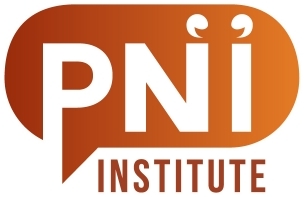We were supposed to talk about PNI and start-with-a-list methods on this call, but we had a new member join in, and he was thinking about PNI in support of citizen participation, so we talked about that instead. (I”m not sure we will ever talk about PNI and start-with-a-list methods. Maybe it’s not the right time yet. We’ll see.)
So what did we talk about? We talked about the difference between storytelling and story sharing, and how people are used to being told stories by those who run things — and are not used to being listened to. We talked about how so much political discourse on the internet today is about opinions, but very little is about experience. We talked about how just a few tweaks to the way conversations are framed online could change that.
We talked about (one of my favorite mental models) Harrison White’s three species of identity interaction and how they might connect to supporting people engaged in participatory democracy. In White’s model, interacting people engage in:
- Selection activities – the comparison and evaluation of options and ideas
- Mobilization activities – the formation, development, and dissolution of coalitions
- Commitment activities – getting things done in groups with common goals
We talked about how online citizen engagement tends to favor supporting mobilization, because people trade facts and opinions when they are trying to mobilize support for coalitions. We talked about how people engaged in each of these “species of interaction” need different things.
- People looking for selection activities should be able to quickly find, compare, and evaluate positions, policies, and ideas.
- People looking for mobilization activities should find ways to connect with others, to understand all perspectives on issues, and to engage in spirited yet civil dialogue on contentious issues.
- People looking for commitment activities should be able to find groups to work with and coordinate plans and actions.
Then we talked about how story work could be used to support each of these activities as they relate to citizenship.
- To find, compare, and evaluate positions, policies, and ideas – Stories of diverse experience around particular positions, policies, and ideas can provide context and depth to those looking to make choices. The grounding of abstract ideas in real-life experience can help people get past slogans to a better understanding of the issues.
- To connect, understand, and engage in dialogue – One of the problems with online discussion is that it dehumanizes us. Talking to people through a message board or comment section can feel like we are surrounded by cardboard cutouts, not real people. It’s no surprise, then, that most of us have a hard time feeling all that guilty when we ignore or insult people we can only “see” through strings of words on a screen. But this is not inevitable. Even if we are reduced to sharing strings of words on screens, what is in those strings of words can have a transformative effect on the way we interact. Sharing stories is part of what makes us real to each other, and we can share stories through strings of words on screens. If it’s done right, bringing story sharing into online discussions has the promise of converting cardboard cutouts back into real people we can get to know and treat with respect.
- To find groups and coordinate actions – Stories can help people find groups to join by communicating the essence of what the group stands for and is trying to achieve. Stories can help groups achieve their goals by bringing new members up to speed, keeping a history of the group’s accomplishments and lessons learned, and improving group coherence by helping people understand each other better and helping each group member feel heard and appreciated.
We then talked about how story sharing is grounding because it connects people to practical reality (“on the ground” as opposed to “in the sky” of abstract ideas). And we talked about the use of stories as a bridge between online and off-line interactions, and as a bridge between groups. Stories can create these bridges because story sharing has always been an intermediary, negotiated, go-between mode of communication. Bringing stories into online support of participatory democracy is not about designing new ways of interacting. It’s about avoiding the introduction of artificial restrictions by designing social interactions blindly, without understanding what we are enabling and what we are destroying.
Thanks to our new member for initiating this interesting discussion!

